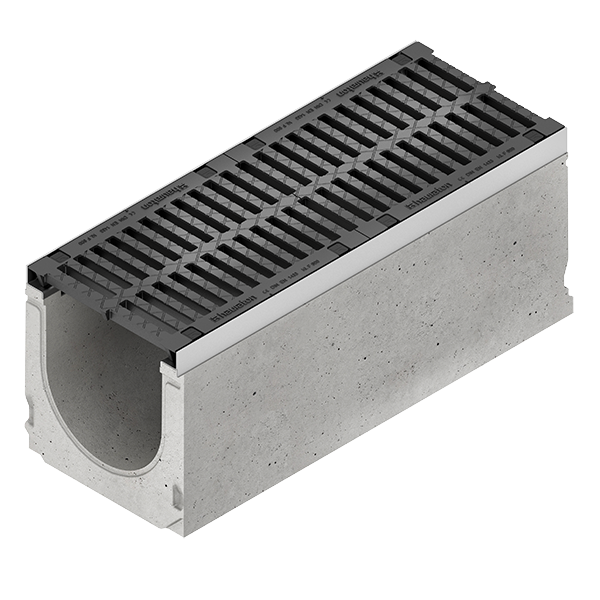
High-performance channel systems for maximum traffic safety up to load class F 900 according to EN 1433.
Several factors come into play when choosing a suitable drainage system for residential and commercial buildings. The interaction of precipitation, water runoff, flooding and building development must be taken into account. In addition, various standards and guidelines for dealing with rainwater must be observed (DWA M-153, DWA A-102, DWA A-138, EN 752 and others). In addition, the regular modernisation and renovation work requires a technically feasible, and at the same time, cost-efficient solution.
Residential buildings are not only a place of retreat and the centre of life for many people, they also shape the cityscape. Therefore, the following requirements must be taken into account when planning the rainwater management of existing residential buildings or new construction areas:
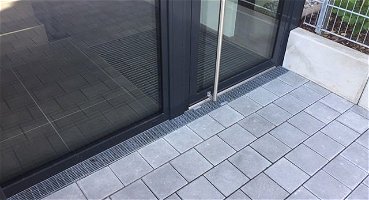
The building must be continually protected from precipitation, standing water or pressurised water. Accumulating precipitation must be safely and reliably drained away.
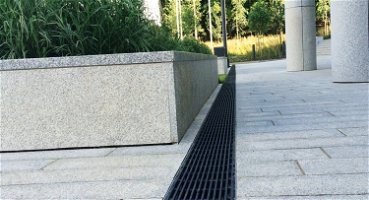
Every building is individual and has its own character, which must be emphasised. The drainage solution must therefore be functionally and aesthetically integrated as part of the building’s architecture and urban environment.
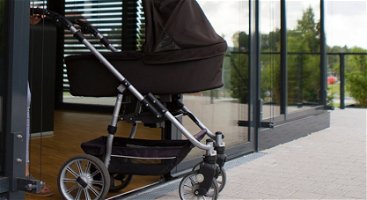
To ensure that all living areas are accessible without restriction, passageways and thresholds are increasingly being planned and implemented barrier-free. Of course, the building structure must also be protected from precipitation.

“When planning and implementing drainage solutions for residential & commercial buildings, many requirements must be taken into account. I am happy to support you in all project phases – from the drainage application to the hydraulic calculation and installation.”
Commercial buildings also place high demands on drainage. In addition to safe solutions for heavily trafficked commercial areas, watercourse and groundwater protection also play an important role.
There are two different solutions with various possible combinations for planning a comprehensive rainwater management concept for residential and commercial buildings.

High-performance channel systems for maximum traffic safety up to load class F 900 according to EN 1433.
A revitalised soil zone allows large amounts of water to be collected, temporarily stored and infiltrated. Pollutants are bound in the soil. Disadvantage: Large space requirement, high maintenance effort, little control over the cleaning performance and heavily polluted soil.
By inserting a technical filter into the green swale, the water can be efficiently pre-cleansed. The maximum 30 cm high filter layer in the swale retains the pollutants on the surface and the swale can be made significantly smaller. In addition, it requires less maintenance.
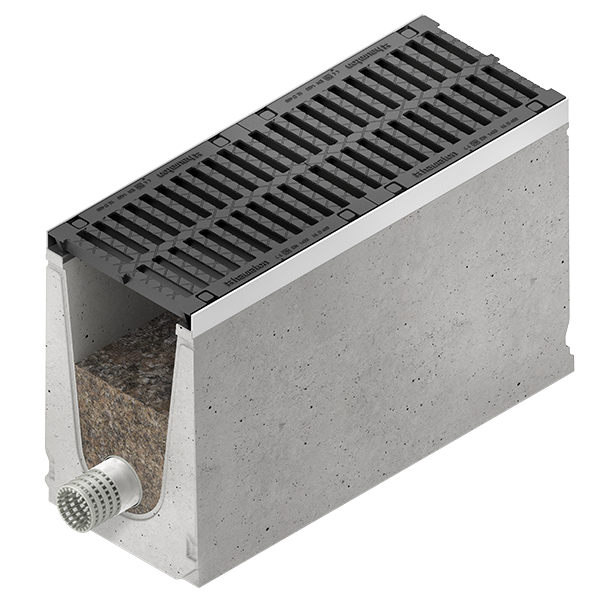
Heavy-duty drainage channel with filter substrate integrated into the traffic surface is installed at the end of the parking row or between two parking spaces. This creates a visual separation and can still be driven over and walked on.
Rainwater from traffic areas can be used, among other things, to irrigate tree pits. Due to the pre-cleansing in the filter substrate channel, the rainwater can be fed directly to the plants.
In combination with the DRAINFIX BLOC 300, the pre-cleansed water can seep into the ground. Due to the possible retention volume in the channel, the volume of the infiltration element can be smaller than that of other systems.
Pre-treatment of rainwater ensures that it can be easily stored and reused.
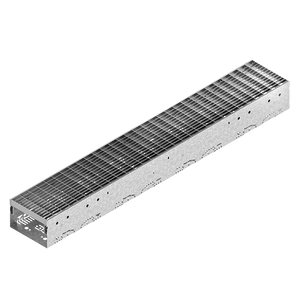
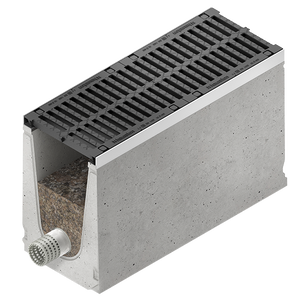
–
Galvanised or stainless steel angle housing with 20 x 20 mm insertion depth
Galvanised steel or ductile iron angle housing with 40 x 40 mm insertion depth
Depending on the variant, with FASERFIX or RECYFIX:
Galvanised steel or ductile iron angle housing with 40 x 40 mm insertion depth
– Slotted gratings
– FIBRETEC design slotted gratings
– Mesh gratings
– Longitudinal gratings
– Perforated gratings
⇒ Made of recycled composite, galvanised or stainless steel
– Reinforced slotted gratings
– FIBRETEC and METROPOLIS design slotted gratings
– Perforated gratings
– Longitudinal gratings
– Mesh gratings
– Ductile iron gratings
⇒ Made of ductile iron, recycled composite, galvanised or stainless steel
– Ductile iron slotted gratings
– GUGI ductile iron mesh gratings
– Ductile iron slotted gratings
– GUGI ductile iron mesh gratings
– Design in accordance with standards & guidelines
– Practical height adjustment
– Channel in shallow design possible
– Simple drainage connection through perforation in the channel bottom
– On-site connection continuously protects buildings from standing or pressurised water
– Barrier-free passageways
– Boltless locking system SIDE-LOCK
– 10-fold fixation of the grating per metre
– Extra thick side walls
– Boltless locking system SIDE-LOCK
– 16-fold fixation of the grating per metre
– Factory-made cross and T elements possible
– Rainwater treatment through surface filtration
– Large retention volume
– DIBt approval Z-84.2-7
– DWA-A 102: 97% efficiency
– DWA-M 153: efficiency D=0.06
There are many special features to consider when planning and implementing residential and commercial buildings. We find the right product for every application and support you with our expertise!
Technical experts support you with your project
We are happy to support you as an expert for complete solutions in your residential and commercial building project. In addition to the hydraulic calculation, planning and the implementation of a suitable drainage solution, we also offer customised tailored solutions.
Our experienced planning team will be happy to help you.
Get in touch